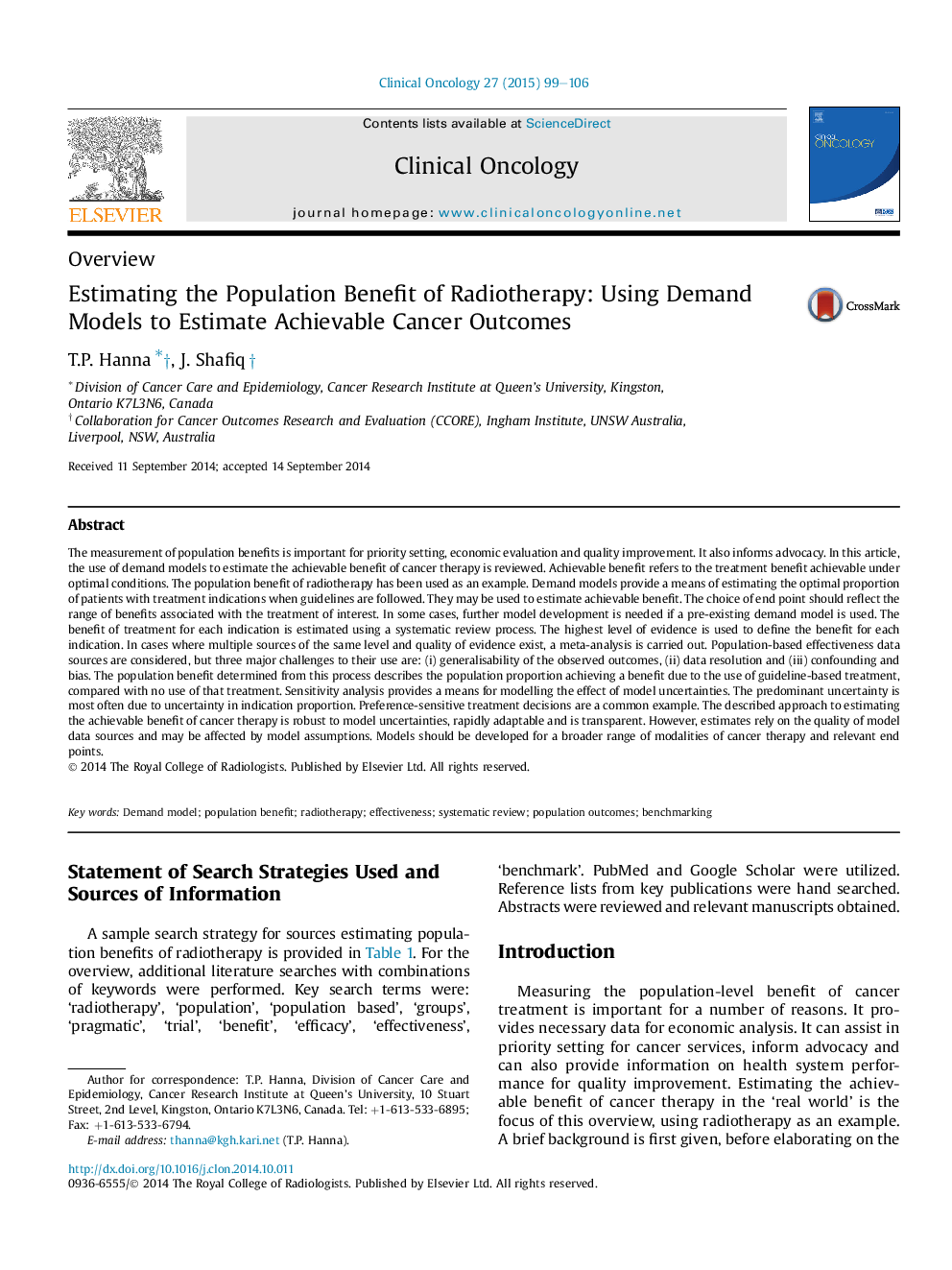| Article ID | Journal | Published Year | Pages | File Type |
|---|---|---|---|---|
| 5698397 | Clinical Oncology | 2015 | 8 Pages |
The measurement of population benefits is important for priority setting, economic evaluation and quality improvement. It also informs advocacy. In this article, the use of demand models to estimate the achievable benefit of cancer therapy is reviewed. Achievable benefit refers to the treatment benefit achievable under optimal conditions. The population benefit of radiotherapy has been used as an example. Demand models provide a means of estimating the optimal proportion of patients with treatment indications when guidelines are followed. They may be used to estimate achievable benefit. The choice of end point should reflect the range of benefits associated with the treatment of interest. In some cases, further model development is needed if a pre-existing demand model is used. The benefit of treatment for each indication is estimated using a systematic review process. The highest level of evidence is used to define the benefit for each indication. In cases where multiple sources of the same level and quality of evidence exist, a meta-analysis is carried out. Population-based effectiveness data sources are considered, but three major challenges to their use are: (i) generalisability of the observed outcomes, (ii) data resolution and (iii) confounding and bias. The population benefit determined from this process describes the population proportion achieving a benefit due to the use of guideline-based treatment, compared with no use of that treatment. Sensitivity analysis provides a means for modelling the effect of model uncertainties. The predominant uncertainty is most often due to uncertainty in indication proportion. Preference-sensitive treatment decisions are a common example. The described approach to estimating the achievable benefit of cancer therapy is robust to model uncertainties, rapidly adaptable and is transparent. However, estimates rely on the quality of model data sources and may be affected by model assumptions. Models should be developed for a broader range of modalities of cancer therapy and relevant end points.
